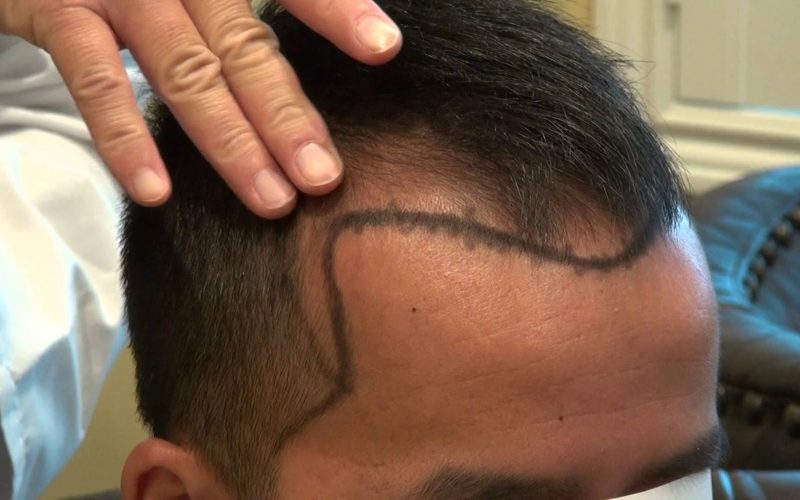Are you struggling with hair loss and looking for a solution that provides natural-looking results? The field of hair transplant technology has seen significant advancements in recent years, revolutionizing the way hair restoration procedures are performed. In this article, we will explore the latest breakthroughs in hair transplant technology, ensuring you stay informed about the most cutting-edge options available.
Introduction
Hair loss can be a distressing experience for both men and women, affecting self-esteem and overall well-being. Thankfully, advancements in hair transplant technology have opened up new possibilities for individuals seeking to regain a fuller head of hair. Gone are the days of outdated, invasive procedures that left visible scars. Today, modern hair transplant techniques offer improved precision, efficiency, and natural-looking results.
The Evolution of Hair Transplant Technology
Over the years, hair transplant technology has evolved significantly, addressing the limitations of traditional methods. These advancements have resulted in increased success rates, reduced recovery times, and enhanced patient satisfaction.
One of the most remarkable advancements in hair transplant technology is the introduction of robotic systems. Robotic hair transplant systems utilize artificial intelligence algorithms to perform precise and efficient hair follicle extraction and transplantation. These systems provide unparalleled accuracy and consistency, resulting in natural-looking hairlines and optimal hair density.
Follicular Unit Extraction (FUE)
Follicular Unit Extraction, commonly known as FUE, has emerged as a preferred technique for hair transplantation. Unlike traditional methods that involved strip harvesting, FUE involves individually extracting hair follicles from the donor area and implanting them into the recipient area. This method offers several benefits, including minimal scarring, faster recovery, and a more natural appearance.
With FUE, hair transplant surgeons can meticulously select and extract healthy hair follicles, ensuring optimal results. The precision and attention to detail involved in FUE allow for the creation of natural hairlines that blend seamlessly with existing hair.
Direct Hair Implantation (DHI)
Direct Hair Implantation, or DHI, is another innovative technique that has gained popularity in the field of hair restoration. This method involves the direct implantation of hair follicles into the recipient area without the need for prior creation of recipient sites. DHI offers several advantages over other methods, such as reduced surgery time, quicker healing, and minimal scarring.
The specialized tools used in DHI enable the surgeon to implant the hair follicles at the precise angle and depth required for natural hair growth. This technique ensures high hair survival rates and enhances the overall aesthetic outcome of the procedure.
Platelet-Rich Plasma (PRP) Therapy
Platelet-Rich Plasma (PRP) therapy has emerged as an effective complementary treatment in conjunction with hair transplant procedures. PRP therapy involves drawing a small sample of the patient’s blood, separating the platelets and plasma, and injecting the concentrated platelets into the scalp.
PRP contains growth factors that stimulate hair follicle regeneration and improve the overall success of hair transplant surgeries. By incorporating PRP therapy into the procedure, surgeons can enhance hair growth, promote faster healing, and improve the overall quality of transplanted hair.
Artificial Intelligence (AI) in Hair Transplant
Artificial Intelligence (AI) has made remarkable contributions to the field of hair transplant technology. AI algorithms are now utilized to analyze donor and recipient areas, assisting surgeons in creating personalized treatment plans. These algorithms consider factors such as hair density, natural hairline design, and facial structure to optimize the transplantation process.
The integration of AI in hair transplant procedures ensures a higher degree of accuracy and precision. Surgeons can now offer patients customized hairlines that complement their individual features, resulting in more natural-looking and satisfying outcomes.
Stem Cell Therapy for Hair Regrowth
Stem cell therapy holds great promise for hair regrowth and restoration. Stem cells have the unique ability to differentiate into various cell types, including hair follicle cells. Researchers are exploring the use of stem cells to stimulate dormant hair follicles and promote new hair growth.
When combined with hair transplant procedures, stem cell therapy can enhance the success of the transplantation process. By integrating stem cell therapy, surgeons can maximize the regenerative potential of the scalp, leading to improved hair density and overall hair restoration outcomes.
Advantages of New Hair Transplant Technology
The new hair transplant technology offers several advantages over traditional methods, making it an attractive option for individuals seeking hair restoration solutions.
First and foremost, the results achieved with the latest techniques are incredibly natural-looking. The precision and meticulousness involved in the transplantation process ensure that the transplanted hair blends seamlessly with existing hair, creating a natural and aesthetically pleasing appearance.
Furthermore, the new technology minimizes scarring, making the procedure virtually undetectable. Unlike older methods that left visible linear scars, the new techniques, such as FUE and DHI, involve tiny incisions and extraction points, resulting in minimal scarring that is easily concealable.
Recovery time has also significantly improved with the advent of new hair transplant technology. Patients can now expect quicker healing and minimal post-operative discomfort. This allows individuals to resume their regular activities sooner, without the need for extended downtime.
The personalized treatment plans made possible by AI algorithms ensure that each patient receives a tailored approach to their hair restoration journey. Surgeons take into account the patient’s specific needs, facial structure, and desired hairline design, resulting in highly individualized and satisfying outcomes.
Choosing the Right Hair Transplant Clinic
When considering hair transplant procedures, it is crucial to choose the right clinic and surgeon. Several factors should be taken into account during the selection process.
First and foremost, research the reputation and expertise of the clinic and the surgeon performing the procedure. Look for certifications, accreditations, and positive patient reviews that demonstrate the clinic’s commitment to excellence and patient satisfaction.
Consultation with hair transplant specialists is essential to discuss your goals, expectations, and any concerns you may have. A skilled and experienced surgeon will conduct a thorough evaluation of your hair loss condition and recommend the most suitable treatment plan for your unique needs.
Post-Transplant Care and Maintenance
Following post-transplant instructions is vital for achieving optimal results and ensuring a smooth recovery process. Your surgeon will provide you with detailed guidelines on how to care for your transplanted hair, including instructions for washing, drying, and styling.
During the initial healing period, it is essential to avoid excessive heat, direct sunlight, and strenuous physical activities that may disrupt the healing process. Adhering to these instructions will help promote proper healing and hair growth.
Long-term maintenance is also crucial for sustaining the results of your hair transplant. Your surgeon may recommend specific hair care products or medications to support healthy hair growth and prevent further hair loss.
Costs and Insurance Coverage
The cost of new hair transplant technology varies depending on several factors, including the extent of hair loss, the complexity of the procedure, and the clinic’s location. Generally, the cost range for these advanced techniques is higher compared to traditional methods. However, it is essential to consider the long-term benefits and the investment in regaining your self-confidence and quality of life.
Insurance coverage for hair transplant procedures may vary. While some insurance providers may cover a portion of the cost, others may consider it a cosmetic procedure and not provide coverage. It is advisable to check with your insurance provider regarding their policy on hair transplant coverage.
For individuals concerned about the upfront costs, many clinics offer financing options to make the procedure more affordable. Additionally, some employers offer reimbursement programs for hair transplant procedures as part of their employee benefits. It is worth exploring these options to ease the financial burden.
Potential Risks and Side Effects
As with any surgical procedure, hair transplant surgeries carry certain risks and potential side effects. It is important to be aware of these risks and have realistic expectations regarding the outcome.
While the new hair transplant technology minimizes scarring, there is still a possibility of scarring in the donor and recipient areas. However, these scars are typically small and easily concealed.
Other potential risks include infection, bleeding, and temporary shock loss, where transplanted hair falls out before entering a new growth cycle. These risks can be mitigated by choosing a skilled and experienced surgeon who follows strict hygiene protocols and provides comprehensive post-operative care instructions.
Real-Life Success Stories
Real-life success stories of individuals who have undergone the new hair transplant technology serve as inspiration for those considering the procedure. These stories highlight the positive impact hair restoration can have on self-confidence, self-image, and overall quality of life.
Before-and-after photos and testimonials from satisfied patients showcase the transformative results achieved through the new techniques. Reading about the experiences of others who have gone through the process can provide reassurance and confidence in your decision to pursue hair restoration.
The Future of Hair Transplant Technology
The field of hair transplant technology continues to evolve rapidly, and the future holds even more exciting advancements. Virtual reality and augmented reality are expected to play a significant role in the industry, allowing patients to visualize their potential results before undergoing the procedure.
Continuous improvements in surgical techniques, instrumentation, and donor hair preservation methods will further enhance the outcomes of hair transplant procedures. The future is promising, with ongoing research and development focused on delivering even better and more natural-looking results.
Conclusion
If you have been struggling with hair loss and are seeking a reliable and effective solution, the new hair transplant technology of 2022 offers hope. With advancements such as FUE, DHI, PRP therapy, AI integration, and stem cell therapy, individuals can achieve natural-looking results, minimal scarring, and faster recovery times.
Choosing a reputable hair transplant clinic and discussing your goals and concerns with experienced surgeons are essential steps towards reclaiming your confidence and restoring your hair. Remember to follow post-transplant care instructions and engage in long-term maintenance for sustained results.
The future of hair transplant technology looks promising, with continued advancements on the horizon. Embrace the next generation of hair restoration and rediscover a fuller, more vibrant head of hair.
FAQs
- Can anyone undergo the new hair transplant technology?
- The new hair transplant technology is suitable for most individuals experiencing hair loss. However, it is important to consult with a hair transplant specialist to determine your candidacy based on factors such as the extent of hair loss, donor hair availability, and overall health.
- How long does it take to see results after the procedure?
- The timeline for visible results can vary from person to person. In general, transplanted hair will shed within the first few weeks after the procedure. New hair growth typically starts within a few months, with significant improvement noticeable within 6 to 12 months.
- Is the new hair transplant technology suitable for women?
- Yes, the new hair transplant technology can be an effective solution for women experiencing hair loss. However, the underlying cause of hair loss should be assessed, as some conditions may require additional medical intervention.
- Are the results permanent?
- Yes, the results of a hair transplant procedure using the new technology are typically permanent. The transplanted hair is resistant to the hormone dihydrotestosterone (DHT), which is responsible for hair loss in genetically susceptible individuals.
- What is the average recovery time after the procedure?
- The recovery time can vary depending on the individual and the specific technique used. In general, most patients can resume normal activities within a week or two. Full recovery, including the growth of new hair, may take several months. It is important to follow post-operative care instructions for optimal healing.








